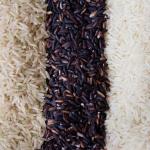A do-it-yourself cake turntable is needed not only by seasoned pastry chefs. This necessary item for those who cook for their own pleasure. Housewives who bake cakes coated with mastic cannot do without such a design. The main purpose of the rotating table is to facilitate the process of decorating the cake. That is, you don’t have to beat around the bush with the finished product; it will be enough to simply decorate the rotating cake. The baked goods spin around their axis, and you just need to have time to decorate them.
How to do Rotary table? First, prepare everything necessary materials. You will need two bearings, which can be purchased at auto parts stores.
Please note that there are double, pressed bearings. The second option is preferable because you will have to tinker less.
The rotating table also needs a wooden slab. You can stock up on a door from kitchen set. In addition, you will need hard nails, screws, plastic tubes, a metal circle, thin plastic, and plywood.
Work process
Scheme Drawing
Making a turntable with your own hands is quite simple. First of all, you will need to draw a high-quality drawing. After this, we begin to work according to the following scheme. If you have two bearings, and not one pressed one, then we hammer the element of the smaller diameter into the larger one using nails. It is necessary to cut two circles with a diameter of 20 cm in a wooden slab. A hole is cut in the middle of one of the circles into which the bearing is driven. In this case, the two parts are twisted and secured with self-tapping screws. A bearing is placed in the center.
The DIY table is equipped with plastic tubes. The tube should connect the upper and lower parts. Keep this point in mind when making a drawing for the turntable. In this case, the tube must fit exactly into the bearing. The ideal length is 15 cm. Such a tube will not be too short or long, so you will not have to bend over while decorating the product.
The top is made of metal. To make it spin, give Special attention its diameter. On average, the diameter of a metal circle should range from 30 to 40 cm. If you have the opportunity to weld the elements, that will be great. For those who are deprived of such an opportunity, it was invented cold welding, which looks like plasticine. The cake turntable also requires circles cut from plywood. The rotating part is installed on the pipe, and the elements are fastened with self-tapping screws.
1
2
3
4
5
6
7
The table can be made of wood:

Cake turntable
Bearing Rotation unit assembly
Tabletop base Rotating part assembled
Cake turntable (bottom view) Cake turntable (side view)
I have had a large round table in my living room for many years. Friends and relatives often gather for a festive feast. During the meal, requests arise to pass on this or that dish. This causes unnecessary fuss and certain inconveniences. After looking at a lot of information on the Internet about different models furniture, I decided to make a rotating table with my own hands, the drawings of which I completed myself. Having assembled a simple design, I immediately got rid of the above-mentioned problems. In this article I will tell you how to make a round table with a rotating center with your own hands.
Tabletop project with a rotating center
It was important to me to create a stand in the form of a turntable. Its design should be simple and not cause time or financial costs. The main idea is the design of the table plane rotation unit. I used a hinged furniture support. I decided to make a load-bearing plane from two sheets of fiberboard and chipboard. I don't use wood. Before making a table with a rotating center with my own hands, I prepared the tools and materials.
Tools
Having assessed the volume and types of work, I collected tools in accordance with the following list:
- jigsaw, which I use to cut circles from fiberboard and chipboard;
- I will need an electric drill to drill holes for connecting furniture parts;
- screwdriver for fastening screws;
- an air compressor with a gun for blowing holes and treated surfaces;
- hammer;
- iron;
- wrench;
- improvised tools (pliers, screwdriver, metal ruler, tape measure, knife, pencil).
Materials
To make a round table with a rotating center with my own hands, I selected the materials necessary for this. The list included the following:
- fiberboard sheet – 600 x 600 mm;
- piece of chipboard – 600 x 600 x 20 mm, selected according to the color of the main tabletop;
- roller support;
- a piece of timber 50 x 50 x 500 mm;
- hardware – 4 screws 6 x 20 mm, two bolts 10 x 30 mm with, one screw 8 x 70 mm washers and nuts;
- Whatman paper;
- liquid nails – tube (185 g);
- end adhesive furniture tape 25 mm wide;
- sandpaper.
To make it clearer to the reader how to make a rotating table, I have compiled instructions for assembling this device.
Step-by-step instructions for assembling a rotating table with your own hands
I outline all my actions in points in the following order.
- I determine the size of the rotating plane to be 600 mm. Since the diameter of the main table is 1300 mm, the table will not interfere with the plates around it.
- I fasten a sheet of whatman paper to the board with pushpins.
- Taking advantage drawing tools, I draw a circle of 600 mm on paper. I carefully cut out the table layout with scissors.
- Having attached whatman paper to a sheet of fiberboard, I trace it with a pencil. I use a jigsaw to cut out the lining for the tabletop.
- I perform the same actions with a piece of chipboard.
- Using pliers and a screwdriver, I remove the plastic roller from the metal hinge.

- In the middle of the block I make side cutouts for a tight installation of the support.
- Having installed the hinge strictly in the center of the beam, I drill a hole from the side through the openings in the metal.

- I apply the hinge area to the center of the fiberboard and mark the attachment points with a pencil. The hinged support will allow the table to rotate and turn in the desired direction at any time.
- In the fiberboard, following the markings, I drill 4 6 mm holes with a drill.
- I thread the screws through the holes in the sheet and support. I put washers on the side of the platform and tighten the nuts.

- I coat the screw heads with machine oil.
- I apply a circle of chipboard so that the outer boundaries of the two circles coincide.
- Using the marks obtained, I use a drill to make small indentations in the chipboard. They will allow the screw heads to not interfere with the tight fit of the two parts of the rotating tabletop.
- I apply a layer on the surface of the chipboard liquid nails and connect both parts of the table. Having separated them, I wait 3 minutes. Then I finally connect the parts, loading the top with heavy objects at hand.
- I sand the side edges of the circles with sandpaper.
- I place the support beam in the center round table. I make marks at a distance of 30 mm from the edges of the plank.
- I drill through the marks through the timber and the table top.
- I thread two bolts. At the bottom of the tabletop I secure the bolts with nuts and washers.
- I put a hinge with the table top on the fixed support beam. I thread a bolt through a pre-drilled horizontal hole and tighten it with a nut and washer.
- I glue the tape along the end of the circle using an iron. I cut off the protruding part of the edge with a knife. The table is ready.
This instruction makes it possible to understand how to make a table with a rotating center with your own hands without much hassle and at minimal cost.
Labor costs and cost of making a table with a rotating center with your own hands
After finishing the work, I was interested in calculating how much it cost to install the rotating table. Money was spent:
- Fiberboard (0.5 m2) – 50 rubles;
- Chipboard (0.5 m2) – 100 rubles;
- liquid nails “Montazh” (tube 185 g) – 160 rubles;
- articulated leg for a chair - 70 rubles;
- sheet of whatman paper (1 sheet) - 20 rubles.
Total: 400 rub.
I bought sheet material from a furniture workshop as cutting waste. I took a piece of timber, hardware, and adhesive furniture tape from my supplies.
As for labor costs, the work took me no more than 8 hours.
DIY rotating table

After I made a rotating table with my own hands, I came across drawings of more simple project manufacturing a rotating table. You can use a hinged support with a vertical axis instead of a platform. This should be done as follows:
- a hole is drilled in the center of the round table,
- insert an axle with a plastic insert into it.
The table is assembled and attached to the rotating support in the same way as described above. What is attractive about this method of creating a round table with a rotating middle with your own hands? Because the table can be removed at any time, and the hole in the center of the table can be closed with a plastic plug.
Rotating table
I built myself a rotating table. Suitable for decorating cakes and for modeling (including doll heads). I molded it, as they say, from what I had. But it spins perfectly (no cake yet), even if you play in the Field of Miracles or open a casino! :)
What I needed:
1) stand for hot dishes (round rug with a ball pattern - bought on sale in the Metro store for 3 UAH), diameter 38 cm;
2) a piece of fiberboard (we cut out a circle from it with a diameter 1 cm smaller than the hot stand -37 cm);
3) a furniture wheel on bearings and fastened with a screw and nut (to make disassembly easier) - I bought it on the market for 12 UAH;
4) 4 screws, 4 nuts, 4 washers (take the wheel with you to the store and select the length of the screw according to it, so that its length does not interfere with the free rotation of the table, and also keep in mind that it must be recessed in the fiberboard and not protrude above the surface of the table , so the cap should be flat);
5) 4 self-tapping screws, 5-6 cm long;
7) a drill and a drill for self-tapping screws and a large-diameter drill to deepen the hole for recessing the screw head;
8) a block of wood about 60 cm long (I don’t know the exact size, it’s better to choose one for a specific wheel so that it is a little wider than the distance between the wings of the base of the wheel (so that it fits tightly)
9) sandpaper to clean the edges of the fiberboard;
10) screw and wing nut, size 6, suitable length (5-6 cm);
11) glue "Dragon"
First of all, you need to cut a circle out of fiberboard required diameter. Make 4 holes from the center (attaching the base of the wheel). The edges of the fiberboard need to be sanded and covered with tape.
Then we put the base of the wheel on a piece of timber (sharpen it a little so that it fits perfectly), mark and drill a hole for the mount.
We attach the base of the wheel to our tabletop.
TO wooden block We attach additional parts made of timber (so that the table is stable), fasten it with self-tapping screws.
We connect the top part with the base and fasten it.
Apply "Dragon" glue in a spiral pattern to the tabletop from the edges to the center. We apply our mat - a hot stand and separate it again, wait a couple of minutes for the glue to thicken and apply it to the tabletop again. Turn the table over with the table top down and, gently pressing, iron the table top with your hand. reverse side so that the glue adheres well.
All is ready!
If you wish, you can somehow decorate the table leg - paint, decoupage, etc.
Do you want to make an original candlestick for your or your children's room? All in your hands! The uniqueness of the candlestick is that it begins to rotate from the burning air and the heat generated by the candles. You can make such a wonderful item yourself without spending a lot of time and money. Detailed step-by-step instruction will help you with this.
Materials
To make a rotating candlestick with your own hands, prepare:
- empty glass jar;
- candle;
- wire;
- foil (in in this case disposable plate);
- a thick sheet of A4 paper;
- electric lighter;
- pliers;
- scissors;
- stationery knife;
- compass;
- pencil;
- masking tape;
- ruler;
- eraser.


Step 1. Take measurements from the jar you have. You will need its height and radius.


Step 2. The rotating element must be made slightly larger than the diameter of the can. Produce correct calculations The formula will help you: the required circle = 2 x pi x radius.
Transfer the resulting circle onto paper. It should differ by 1 - 3 cm from the diameter of the jar. Leaving the compass at the same point, draw a second circle on paper with a radius 5 mm smaller and another small one with a radius of only 5 mm.

Step 3. Divide the inner circle into 8 parts and draw the cut locations. Draw the teeth in a circle. They will be useful for fastening.

Step 4. Cut out a circle along the center line.

Step 5. Cut a slightly larger circle from foil. Fold the foil on the back side of the paper circle, securing the entire structure with pieces of tape.


Step 6. Make cuts along the previously drawn dotted lines and bend the resulting blades.


Step 7. Cut a circle with a radius of 5 mm from foil. Glue it to the central part of the rotating mechanism blank.

Step 8. Glue the rotating mechanism to the remaining part of the workpiece drawn on paper.

Step 9. Cut a strip of paper that matches the height of the measurements taken from the jar. The length of the rectangle should be the circumference of the jar and another half-centimeter of margin for gluing.
Step 10. Draw a suitable design on paper. In this case, these are stars of different sizes.

Step 11. Cut out the rotating mechanism with teeth and sprockets.

Step 12. Glue the entire structure.

Step 13. In order for the mechanism to rotate, it must be lifted above the can. For this you will need wire. First, bend it around the can, then point the end of the wire towards the center of the circle. Make a few turns and lift it up.
There is such a thing as a turntable. Some people use it for presentations or souvenirs. Confectioners use it to rotate the cake while making it. I decided to make a turntable with my own hands to display my homemade products, like in “3D”. It was based on a motor from microwave oven. Makes almost 3 revolutions per minute. Powered by 220V household network.
To design the table we will need:
- circle made of plywood;
- a rectangle made of plywood;
- switch;
- aluminum corner for mounting the switch;
- power cord;
- screws 10 pieces;
- a motor from a microwave oven.

The first step is to make a cut in our base for the motor. It turned out somehow crooked, but that’s not the point, it will be covered by the table itself. Base dimensions 250mm*100mm, plywood thickness 18mm.

In the table pancake we drill a hole with a diameter of 6 mm, the motor axis is 6.5 mm. The hole is not through, but exactly the length of the motor axis (about 10 mm). Let's try it on. Fits tight. If you drill with the same diameter as the motor axis, the table plate will dangle. It will have to be glued, and this will add additional time to making a homemade product.
You definitely need to look at the motor. They are not 220V. I came across 21V. In the latter case, a transformer is needed; it can be powered from the control board of the same furnace.

Since I have used plywood, I decided to spray paint the pancake and the base of the table. Was in stock matte paint black color. Everything dried quickly. At the same time, I drilled a hole for threading the wires through.

After the paint has dried, screw the motor into its permanent place. I took the screws from an old printer. Very successful because of the wide cap.

We thread the wires into the hole from the bottom of the structure. We solder the switch, for me it is a toggle switch TP 1-2. We attach the corner to the base. We screw the toggle switch to the corner. If you don’t have a corner like I have and another switch, then you can make something to suit your needs.

To prevent the structure from moving on the table, I decided to install rubber feet. I used medicine caps as legs. In general, it is very convenient to use such legs in the manufacture of cases and homemade products. Rubber is very elastic. I screwed them onto the same screws from the printer.

The table plate in my case is 230 mm. The thickness is still the same 18 mm as at the base. Suitable for my needs. This is the table I got. I repeat, it makes almost 3 revolutions in a minute.












